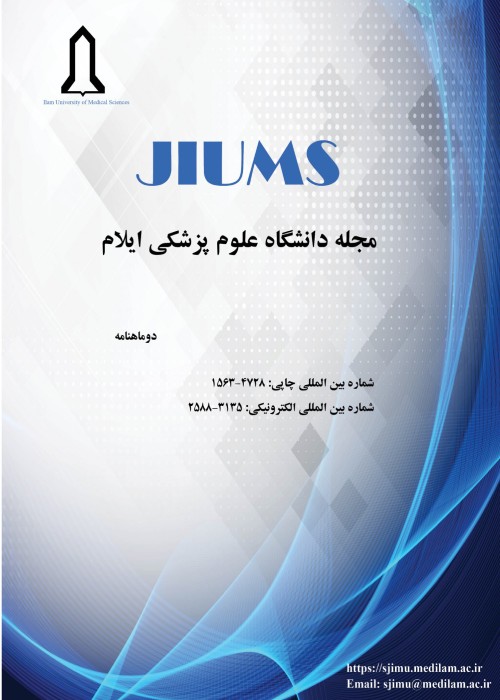Evaluation of Total Phenol and Flavonoid Content in a Wide Range of Local and imported Plants
Author(s):
Article Type:
Research/Original Article (دارای رتبه معتبر)
Abstract:
Introduction
Today, due to the toxicity and carcinogenicity of synthetic compounds, the application of medicinal plants to treat chronic diseases has attracted the attention of many researchers. According to nutritionists claims, the inclusion of fruits and vegetables in the food basket, due to the presence of phenolic compounds and antioxidant substances in the plant as well as regarding the role of antioxidants in the treatment and prevention of chronic diseases such as cancer, the aim of this study was to evaluate the total phenol and flavonoid content of a wide range of local and imported plants of cucurbitaceae, rhamnaceae and citrus family.Materials and Methods
In this study, a wide range of Cucurbits family such as cucumbers and squash, Rhamnaceae and citrus fruits such as tangerine, orange, lemon, etc. from southern Iranian areas of Jiroft, Rodan, Jask and Minab and some seed sellers were evaluated, based on total fenol and flavonoid contents. FolinCiocalteu method was used to measure the amount of total phenolic content and the aluminum chloride method was applied to assess the flavonoid content. The data was analyzed by NTsys pc2.02, SAS 9.1 and student statistics 9 software.Findings: The results showed that Cucurbitaceous genotypes had the highest rates of total phenolic and flavonoid followed by zucchini and Citrus respectively. Spain Cucumber hybrid of tunnel Hilton Genotypes showed the highest rates of total phenolic (25.372 mg/gDW), while pumpkin hybrid stewed uni-flower genotypes indicated the highest rates of flavonoid (235.53 mg/gDW). Our findings also demonstrated that the environment did not prove as significant on anti-oxidant citrus products of Jiroft and Rodan. Furthermore, culsteral analysis segregated all the genotypes into three groups, allowing for their botanical properties.
Discussion&
Conclusion
As concluded by our investigation, the amount of total phenolic of the imported plants was more than that of the local ones, but the amount of flavonoid in local plants was more than the imported ones. Geographical conditions did not affect the amount of phenol and flavonoid compounds. Due to the high levels of antioxidant substances in Cucurbitaceae family and zucchini plants, and also to the risks of cancer from chemicals and synthetic drugs, this plant is suggested to be used as a rich source of antioxidant in food and pharmaceutical industryKeywords:
fenol , flavenoeid , zucchini , citrus , cucurbits
Language:
Persian
Published:
Ilam University of Medical Science, Volume:26 Issue: 2, 2018
Pages:
141 to 154
magiran.com/p1863811
دانلود و مطالعه متن این مقاله با یکی از روشهای زیر امکان پذیر است:
اشتراک شخصی
با عضویت و پرداخت آنلاین حق اشتراک یکساله به مبلغ 1,390,000ريال میتوانید 70 عنوان مطلب دانلود کنید!
اشتراک سازمانی
به کتابخانه دانشگاه یا محل کار خود پیشنهاد کنید تا اشتراک سازمانی این پایگاه را برای دسترسی نامحدود همه کاربران به متن مطالب تهیه نمایند!
توجه!
- حق عضویت دریافتی صرف حمایت از نشریات عضو و نگهداری، تکمیل و توسعه مگیران میشود.
- پرداخت حق اشتراک و دانلود مقالات اجازه بازنشر آن در سایر رسانههای چاپی و دیجیتال را به کاربر نمیدهد.
In order to view content subscription is required
Personal subscription
Subscribe magiran.com for 70 € euros via PayPal and download 70 articles during a year.
Organization subscription
Please contact us to subscribe your university or library for unlimited access!



